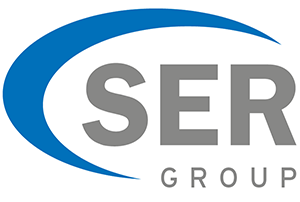By Morad Rhlid, The SER Group
John Naisbitt once said that “Trends, like horses, are easier to ride in the direction they are going” – and he was right. This year, three trends in information management will have evolved to such a high level that no company can afford not to join in on the ride. To truly take advantage of these trends, however, you need to know two things: how they will impact your business and how to benefit from them the most.
Trend #1: AI and content analytics – hit the ground running
There’s no disputing it: artificial intelligence and content analytics technologies are no longer down the road; they are at our doorstep. In 2018, the analysts at Forrester reported that content was still an untapped source of insights and that automation, analytics and data extraction will present opportunities to solve this. Now, in 2019, companies are seeking ways to take advantage of the opportunities. For example, AI technologies such as speech recognition, virtual assistants and machine learning will be ready for mainstream adoption over the next five years and have a transformational benefit.
To really benefit from AI, your information management must ensure that there is not only a high volume of data, but also that it’s in excellent quality. While many companies have made leaps and bounds in the digitalization of information, the challenge now is to make this vast volume of (ideally, high quality) digital data available for content analytics tools and cognitive services. When content is stored across isolated repositories, though, it’s hard to manage and tap the vast data resources. So when your company does want to open its doors to AI and content analytics technologies, it may not be possible to use them due to scattered content.
So what’s the solution? Ideally, your company has an intelligent information management solution in place: a content services platform (CSP) with integrated cognitive services. Content analytics methods using machine learning and content classification can help your company to generate data insights from unstructured content. When a customer calls your service hotline asking about a contract, for example, a content services platform with AI can instantly identify the customer and analyze all information related to the case and the specific context. The CSP is able to provide the supporter the most relevant correspondence, contracts, complaint history, purchases, etc. to handle the inquiry effectively and quickly.
A content services platform can also help your IT administrators to weed out data that is outdated or trivial by automatically labeling content accordingly with metadata. Content labeled as such can then be deleted based on rules or through a verification process and excluded from content analytics. This helps to maintain a high data quality and avoid misleading conclusions. When you are ready to use AI technologies in your company, you want to be able to hit the ground running and maximize its full potential – and a content services platform will create the foundation for doing this.
Trend #2: Content federation – time (is ticking) to connect your disconnected data
Content federation has emerged over the last few years as a great solution to fighting data sprawl. That’s why it offers immense potential for businesses: Content federation empowers your company to find content located across several repositories and to provide it to users as if it were from one source. Regardless of where content is created or stored, content federation makes sure that your company’s data and intelligence is kept actionable.
When information is stored across disconnected repositories and applications, though, you run a big risk now. Why? A major reason is data access and privacy – topics that will play a bigger role this year in how we manage and use content. And the market analysts at Gartner agree, calling digital ethics and privacy one of this year’s biggest trends. And no wonder. Since May 2018, the EU GDPR has forced every company doing business in the EU not only to know where data is stored, but also to delete upon request and much more. What’s more, a rising number of government data protection policies are being planned or will be enacted in the near future.
Content federation, as a part of a content services platform, can enable companies to quickly identify personal data, eliminate duplicates, and to delete it upon request. Content-enriched metadata (see trend #1!) make data discovery and management much more expedient and effective. Another key advantage of content federation is that it provides you with a 360-degree view of your information, and thereby of your business processes. By indexing federated content, you make it an active and valuable part of your information management system.
Trend #3: Collaboration – the perennial trend
If there was a popularity contest for content management trends, collaboration would take home the trophy every time. It’s a perennial trend. On the one hand, you have to meet the ever-changing needs of users, both internal and external, who must have seamless and secure collaboration spaces and processes. On the other hand, you must ensure a high level of usability and practicality. Users should quickly see that the enterprise collaboration solution is a more effective and easier way of sharing and working on information than using (highly insecure!) email or file sharing solutions – or, even worse, using unsanctioned shadow IT applications. A 2017 poll revealed that 78% of the responding IT professionals said that their users have set up unapproved applications more than once. A pretty unsettling statistic.
The challenge for companies is to set up an enterprise collaboration solution that integrates not only customers and suppliers, but also project partners, development partners, experts, etc. from all over the world and that gives everyone the same basis of information for contributing, informing, sharing, etc. – all while ensuring security and transparency. That’s a tall order! File sharing solutions simply fall short here. Especially when it comes to data control and ensuring compliance with data privacy regulations (see trend #2!).
Virtual project and data rooms, as a collaboration solution added to a unified content services platform, are one way to fulfill the rising tide of collaboration needs. In this shared space, users can create, organize and work on documents, tasks and processes. Everyone works with the same data pool. You can integrate external participants into internal processes without risking security and information governance (e.g. applying differentiated version and access rights). Users always know what tasks they must complete or which deadlines are approaching thanks to practical features like dashboards. With a high level of usability, even the biggest fans of email and file sharing solutions will be persuaded that it’s time to enter the next generation of collaboration. And this means many good things for your company – for example, happy users and less shadow IT.
The common thread: A platform approach to content services
Three digital content management trends in 2019 – artificial intelligence, content federation and collaboration – have the potential to provide your business true value and enhance how your company manages and utilizes information. The question is how to achieve this. One common thread emerges here: a content services platform approach. It is able to
- provide the foundation on which your company can easily build business applications to run artificial intelligence technologies and content analytics solutions
- facilitate content federation to connect your dispersed data repositories and make them available as if from one source
- gives users, both internal and external, a shared and secure virtual space to collaborate, regardless of location, time or even companies
The future is now – so go for it!
As you formulate your digital information management roadmap for 2019 and beyond, it is wise to follow John Naisbitt’s advice, but make sure you have the right saddle for the ride. It’s not too late to lay the foundation for future-ready and innovative information management.
About the author

As a Managing Director of the SER Group, the largest ECM vendor in Europe, Morad Rhlid helps businesses make the jump into the digital future using SER’s content services platform Doxis4 and the integrated collaboration solution Doxis4 iRoom. Rhlid is an ardent believer in the power of ECM and has been successfully convincing IT managers in various international markets of this for over 20 years now.






